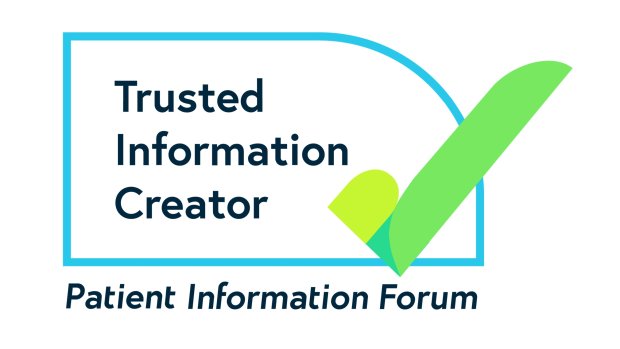
The McDonald criteria
Doctors use the McDonald criteria to diagnose someone with multiple sclerosis (MS).
It’s not easy to diagnose MS. There’s no single test for it, and lots of other things can look like MS. So doctors need these criteria to help them be sure you have MS.
What are the McDonald criteria?
The McDonald criteria are a set of guidelines to help neurologists decide if someone has MS. Neurologists treat nerve-related conditions. These guidelines were named after the leading New Zealand neurologist William McDonald. Neurologists have used them for over twenty years to diagnose and treat people sooner.
Doctors look for signs of damage to your central nervous system (your brain and spinal cord). After they’ve ruled out all other possible causes, they use the McDonald criteria to make a diagnosis. You can only be diagnosed with MS if you have two things that the McDonald criteria ask for: dissemination in both time and space.
What does ‘dissemination in time and space’ mean?
‘Dissemination’ or ‘disseminated’ mean ‘spread across’. In MS it describes when and where signs of nerve damage show up:
- ‘Disseminated in time’ means you’ve had new attacks or relapses, or lesions have appeared on your MRI scans, at different points over time.
- ‘Disseminated in space’ means different places within your brain or spinal cord have been damaged. Attacks have affected different parts of your brain or spinal cord, or scans show lesions in different areas. For example, you might have several lesions in different parts of your brain. Or you might have a lesion in your brain with another on your spinal cord.
In the McDonald criteria the word ‘attack’ describes when a new symptom appears or an old one comes back. You probably call this a ‘relapse’. When the criteria talk about ‘lesions’, this means areas of nerve damage caused by MS. Lesions can be seen on an MRI scan.
What evidence do the McDonald criteria need?
The McDonald criteria need evidence that comes from:
- a physical examination
- asking about your symptoms
- your test results (such as an MRI scan and a lumbar puncture)
Examination
A neurologist checks things like your sight, hand and leg strength, and how you walk. They'll also test your balance, reflexes and coordination. They’ll ask about your symptoms (now and in the past). All this tells them how many attacks (or relapses) you’ve had. It also shows what parts of your brain or spinal cord were affected. Your type of symptoms is linked to where in your brain or spinal cord an attack happened.
MRI scans
This is usually a scan of your brain. It could be of your spinal cord if symptoms point to lesions there. These could include problems with walking, balance, or with your bowel or bladder.
Lumbar puncture and oligoclonal band testing
During a test called a lumbar puncture (or ‘spinal tap’), a needle is put into your back. It collects fluid from around your spinal cord called cerebrospinal fluid (CSF). Tests will show if this fluid has antibodies in it.
Your body makes antibodies to fight infections. Antibodies in spinal fluid are a sign of inflammation in your central nervous system. You don’t see this in healthy people. But nearly everyone with MS has antibodies in this fluid. When antibodies are there, the test shows ‘oligoclonal bands’. These bands of protein (called immunoglobulins) are a strong sign you might have MS.
The McDonald criteria say oligoclonal bands can be evidence of dissemination in time. That’s because they’re a sign that MS has been active in the past. So this test can be an important step in getting a definite diagnosis.
What do the McDonald criteria say?
After all other possible causes for your symptoms have been ruled out, your neurologist will turn to the McDonald criteria. These tell the doctor what lesions and attacks they must see before they can confirm that you have MS.
Your neurologist must see lesions in at least two out of four parts of your central nervous system. This could be on your spinal cord and/or in particular parts of your brain.
What the McDonald criteria say you must have before you can be diagnosed with MS
There’s nothing more that you must have. You have MS.
The first and second attacks show dissemination in time. Lesions in more than one part of your brain or spinal cord show dissemination in space.
The first and second attacks show dissemination in time but not in space. You must have:
- a new lesion, OR
- a new attack
The new attack or lesion must affect a different part of your brain or spinal cord than what you've had already.
Lesions in different parts of your brain or spinal cord show dissemination in space but not in time. You must have:
- a second attack, OR
- a new lesion, OR
- oligoclonal bands on a test of your spinal fluid
You don't have dissemination in space or time.
For dissemination in time you must have:
- a second attack, OR
- a new lesion, OR
- oligoclonal bands on a test on your spinal fluid
You have primary progressive MS but only if there’s worsening of your symptoms over a year AND you see two of these:
- lesions that show dissemination in space in your brain
- lesions that show dissemination in space in your spinal cord
- oligoclonal bands on a test of your spinal fluid
The next update to the McDonald criteria
The McDonald criteria go through regular updates. The last one was in 2017. If you were diagnosed with MS using the criteria before that date, your diagnosis is still accurate. In 2022 work began on a new update.
At the moment a lesion in your optic nerve doesn’t count towards a diagnosis of MS. As part of the 2022 update, neurologists will look at again at whether it should count. The optic nerve links your eyes to your brain.
The argument is that lesions in this nerve should count because the nerve is part of the central nervous system. This nerve is in fact an extension of your brain. For a lot of people, their first MS symptom is when a lesion on their optic nerve causes an inflammation called optic neuritis.
Once the next update of the criteria comes out, we’ll make sure this page reflects the new version.
Do you still have questions about the McDonald criteria, or anything connected to being diagnosed with MS? You can contact our MS helpline, either by phone or email.




